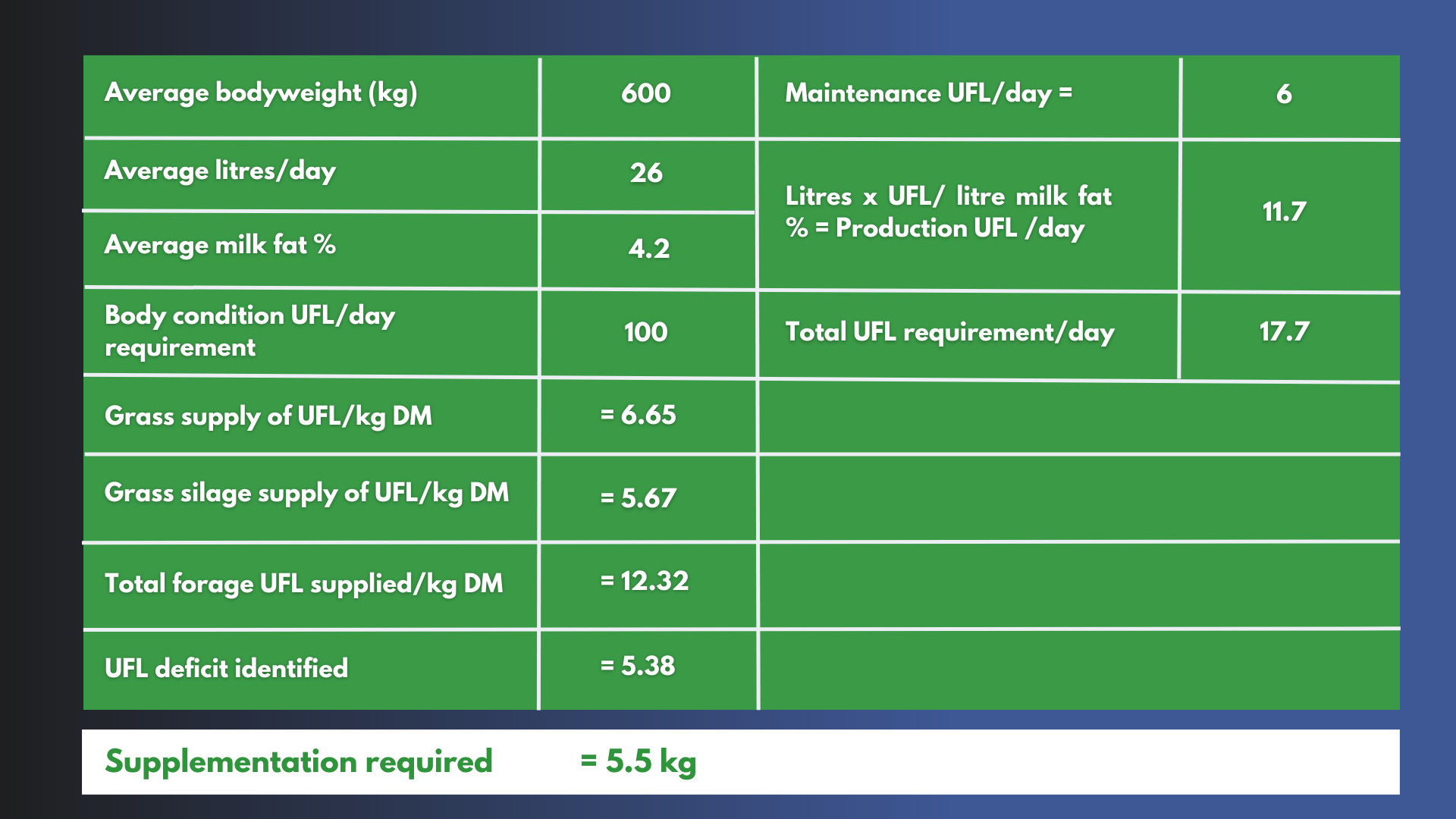Where are we regarding grass currently?
Grazing conditions on many farms in February were better than ever expected, however inclement weather conditions in the last week, coupled with low growth rates to date so far, have resulted in many farms having to plan ahead to stretch what grass is still available to the herd. The aim here is to keep a level of grass in the diet and strategically use on/off grazing over the next few weeks until growth rates increase.
For later-type farms, the priority is to get an amount of grass into the diet as soon as possible. The energy content of grazed grass varies from 1.05 UFL per kg dry matter for leafy fresh spring grass, to 0.85 UFL per kg dry matter for very stemmy grass in the autumn. However, relative to an indoor grass silage diet (72-77% dry matter digestibility silage varying from 0.81-0.86 UFL), grazed grass has a significantly higher energy content.
Current grassland management advice:
- Walk the farm weekly to assess grass availability (grazing conditions should be monitored on a more frequent basis and on an individual paddock basis).
- The average farm cover (AFC) on many farms is dropping below 600 kg DM/ha, and the temptation where conditions are favourable is to keep grazing hard.
- Hold AFC above 600 kg DM/ha until early April, which may mean decreasing your demand with silage buffer and/or increasing concentrates.
- Match demand to grass growth (e.g., growing 15 kg/day with a stocking rate 2.5 LU/ha = allocating 6 kg DM of grass/LU/day).
- Where AFC drops below 550 kg DM/ha, growth will be significantly hampered.
What’s the target?
The target is to have 65% of the platform grazed by March 17th. Many farms due to favourable grazing conditions in early February are well ahead of this target and must avoid running tight/running out of grass until growth rates increase. Where this is an issue, aim to graze no more than approximately 2% of the platform per day.
Striking the balance with fresh cows
As many farms still have fresh cows being introduced to the main herd on a daily basis, it is important to remember how vital it is that these cows are achieving their dry matter intake potential. Offering freshly calved cows a silage buffer with an element of fibre will help alleviate the pressure they may be under and reduce the risk of LDA’s/digestive upsets. A balance must be struck between achieving good graze-outs, while not restricting fresh cows’ intakes – this will require close monitoring. High output herds will be in a similar situation, whereby the transition to grass should be managed correctly.
Remember, a cow will typically reach peak milk output 6-8 weeks post-calving but will only reach peak dry matter intake 10-12 weeks after calving. Feeding rates in the parlour currently will be dependent on the amount of grass in the diet and cow output, however, below is an example of a typical herds feeding requirements while on/off grazing currently.

For further advice on grassland management, contact your local Agritech Sales Advisor.


